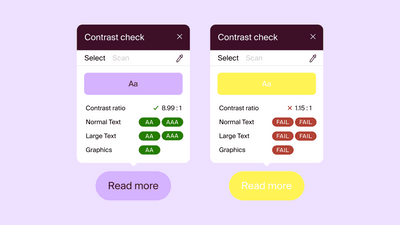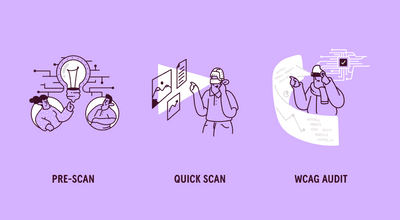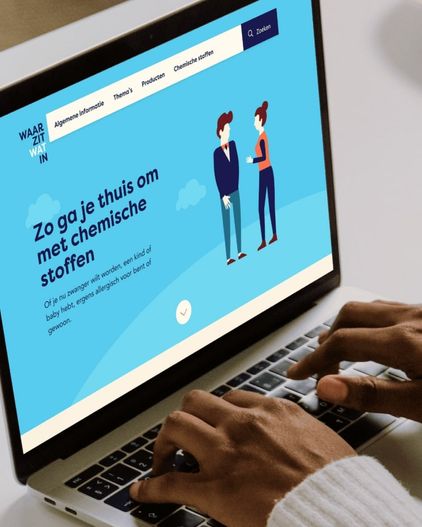Digital accessibility
Since June 2025, many commercial organizations are also required to make their digital products accessible under the European Accessibility Act (EAA). Designing for digital accessibility can be challenging, but above all, it’s an opportunity to create digital products that work for everyone, regardless of ability, context or experience. We call that digital hospitality.


Digital hospitality
1 in 5 people experiences barriers when using digital services, from visual impairments and language challenges to temporary situations like a broken arm or sunlight on a screen. An accessible website or app doesn’t just benefit a small group, it improves the experience for everyone and can offer a strategic advantage. Accessible products don’t have to be boring. With our vision of digital hospitality, we design for readability, navigation, color use, interaction and contrast, without compromising on creativity or brand identity.
Our approach
As of June 2025, the European Accessibility Act requires many commercial businesses to meet digital accessibility standards. What exactly you need to comply with depends on your sector and services. But how do you stay compliant and create a digital experience that’s engaging and distinctive?
At Norday, we help you make that translation, from legal requirement to meaningful design. It starts with one key question: Where are you now and what kind of experience do you want to create?

Three ways to discover where you are now
Curious whether your website meets accessibility standards? Choose the scan that fits your needs:
-
Pre-scan: A quick high-level overview to support strategic decisions.
-
Quick scan: A compact yet detailed assessment to help guide your team effectively.
-
WCAG audit: An in-depth audit with best practices and implementation advice.
We don’t just help you identify the issues, we help you shape the plan. A plan that connects accessibility with design, content and technology. So your digital product doesn’t just comply, but truly stands out.
1 in 5 Dutch people have a disability that affects the way they use websites and digital services. This goes beyond visual impairments - think motor challenges, dyslexia or low literacy.

Avoid costly fixes later: build accessibility in from the start
Many organizations address digital accessibility too late, often resulting in last-minute, large (and expensive) fixes. At Norday, we believe accessibility isn’t a final check, but a core part of strategy, design and development. By considering digital accessibility from the very beginning, you not only avoid fines and legal risks, but also save costs, maximize your return on investment and improve the user experience for everyone.
Accessibility as a strategic advantage
At Norday, we don’t just help companies comply with the WCAG and the EAA, we help them turn accessibility into a strategic advantage. Our approach goes beyond technical checklists. We ensure compliance with all relevant standards, while embedding accessibility directly into UX, content and code. That way, your digital platforms are not only inclusive but also future-proof.
Inspiring examples
Frequently asked questions
1. What is WCAG?
WCAG stands for Web Content Accessibility Guidelines. These are international guidelines developed by the World Wide Web Consortium (W3C) to make web content accessible to people with various disabilities, such as visual, auditory, motor or cognitive impairments.
2. What is the European Accessibility Act (EAA)?
The European Accessibility Act (EAA) is a European directive aimed at improving the accessibility of products and services within the EU. It focuses on removing barriers by establishing uniform accessibility standards for products such as payment terminals, apps and e-commerce platforms.
3. What changes in June 2025?
Starting June 28, 2025, new and updated products and services must meet the accessibility requirements of the EAA. This means that commercial companies will also need to evaluate and adjust their digital products and services to comply with these standards.
4. Who do the WCAG and the EAA apply to?
The WCAG guidelines are intended for anyone involved in designing, developing and maintaining web content. The EAA applies to companies and organizations offering products and services within the EU, including sectors such as banking, transport, telecommunications and e-commerce.
Note: The EAA does not apply to all businesses. There are exceptions. Do you have questions? Reach out to Jelmer Boomsma. He’s happy to explain what the EAA means for you.
5. How are the WCAG and EAA related?
The WCAG provides technical guidelines for creating accessible web content, while the EAA is a legal directive that mandates accessibility for certain products and services within the EU. Compliance with WCAG is required to meet the EAA’s accessibility standards.
6. What are the consequences if my business doesn’t comply with the EAA?
Non-compliance with the EAA can lead to fines, legal action and reputational damage. It’s therefore crucial to ensure timely compliance with accessibility requirements.
7. How can I check if my website complies with WCAG and EAA?
Norday offers various services to evaluate the accessibility of your digital products, such as the Pre-scan, Quick-scan, and WCAG/EAA audit. We help you gain insight into the current status, provide concrete recommendations for improvement and ensure that you meet legal requirements.
Ready to change things?



